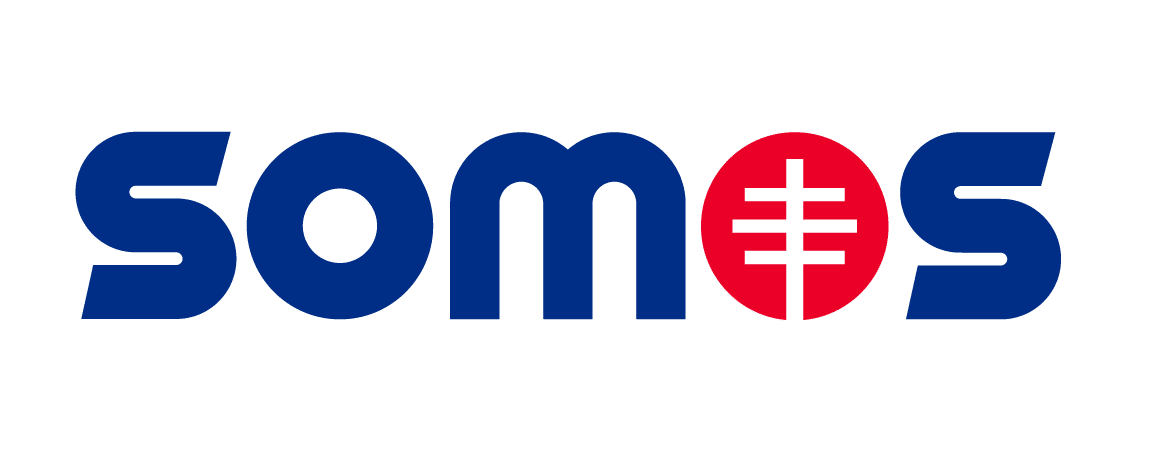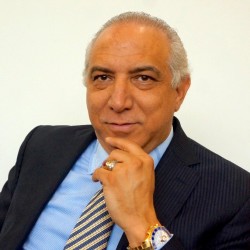

Dr. Ramon Tallaj
Health-Care Reform Pioneer
A NATIVE of the Dominican Republic, where he served as a health-care official, Dr. Ramon Tallaj realized his dream and came to the US in 1991, where he established a successful practice as an internist in the Bronx, NY. He never forgot his roots and has remained committed to serving underprivileged patients—most of them Latinos—throughout New York City. His ambition was to offer the poorest Medicaid patients superior medical care at a manageable cost—even to the point of producing savings for New York State taxpayers.
Partnering with Dr. Henry Chen, a renown New York City primary care provider, Dr. Tallaj founded Advocate Community Providers, Inc. (ACP), which opened its doors April 1, 2015, after a grueling period of preparation. Along with 24 other so-called Performing Provider Systems (PPSs) in New York State, ACP—which was renamed SOMOS—successfully applied to begin operations under the mandate of the Delivery System Reform Incentive Payment (DSRIP) Program.
Behind the jargon-laden terms of the moniker, DSRIP—designed by New York State Department of Health’s recently exited Director of Medicaid Jason Helgerson and championed by Gov. Mario Cuomo—stands for a radical, innovative formula that aims to transform publicly-funded healthcare: the Value-Based Payment (VPB) or Pay-for-Performance System. Doctors and other providers are no longer paid according to the traditional—wasteful and fraud-prone—fee-for-service model, but according to the longer-term health outcomes for patients.
The DSRIP mode incentivizes and rewards doctors—primary care providers, in particular—to fully take charge of their patients’ lives; to establish genuine relationships with them; to get to know their family circumstances, along with social and environmental factors that impact the health of the patient and their families.
The State looks to DSRIP to accomplish in its five-year mandate, due to conclude March 31, 2010, a 25 percent reduction in unnecessary hospitalization. Proactive and watchful treatment keeps patients healthier, preventing neglect of conditions that can become chronic and turn critical, such as cardiovascular illness, asthma and diabetes.
The savings to the state, some $12B after five years, are a big deal; but what is even more important, believes Dr. Tallaj and the team he has assembled, is the fact that DSRIP and its value-based care model puts the interest of the patient front-and-center; and restores and re-creates the role of the family doctor as a trusted, accessible and vital community leader.
In the lead-up to the launch of DSRIP, at a meeting with policy-makers and other stakeholders in Albany, Dr. Tallay famously proclaimed in both English and Spanish: “We are the transformation that New York has been waiting for. We are different.”
Alone among the 25 PPSs operating in NYS under the DSRIP mandate, SOMOS is a physician-led network. With the fourth DSRIP year just begun, SOMOS is comprised more than 2,500 physicians and 800 community health providers who are responsible for the health of more than 650,000 Medicaid patients living in New York City—particularly Asian, African-American and Latino communities.
In a great many cases, SOMOS doctors work and live in the same neighborhoods as their patients, often sharing their linguistic and ethnic background. Indeed, in the DSRIP program, cultural sensibility and compatibility between provider and patient is considered of the utmost importance. It is one of the remedies for the traditional labyrinthine, impersonal hospital-based health-care system in which poor, vulnerable patients—especially recent and new immigrants—had a hard time making their way, let alone feeling comfortable, cared for or understood.
High cost to the Medicaid coffers were the result, as patients, deprived of personalized, pro-active and preventive care would heavily rely on emergency rooms as ultimate, desperate measures. Lower health outcomes or lower-income, immigrant communities have been a fact of life for decades. But no more.
That is the genius of SOMOS, as community-based, neighborhood-based doctors are enabled find the time to really get to know their patients, in turn making the patients feel understood, listened-to and cared for. SOMOS Community Health Workers are mandated to visit patient homes as necessary, to assess living conditions, making sure medical regimens and appointments are kept, etc. SOMOS CHWs also train doctors’ practice staff in managing the digital record-keeping of Electronic Health Records—vital data that were not available or even sought-after in the old system.
A big part of DSRIP’s record of success—savings are on track to exceed the originally projected $12B—is its state-of-the art digital architecture that allows for secure exchange of patient records; between SOMOS and practices and between SOMOS and the NYS Department of Health, which thus can measure long-term health outcomes and award payments to PPSs accordingly.
A newcomer to the complex healthcare universe of New York State—a universe dominated by large-scale, corporate-style massive hospital-based systems—ACP/SOMOS still has to operate under special scrutiny by an Independent Assessor; but the organization has made tremendous progress, showing continued growth and demonstrating a consistent ability to meet DSRIP deadlines and milestones governing levels of clinical care.
Dr. Tallaj has done a tremendous selling job—encouraging independent doctors, small business men and women, members of Independent Practice Associations (IPAs), to take a chance on DSRIP. That commitment holds risks, compared to the guaranteed payment levels of the old fee-for-service model. But the DSRIP model invites doctors to embrace their medical calling to optimally care for their patients in a brand new, dynamic way. The Value-Based-Payment model is an effective tool. And for these committed doctors it is precisely a tool, rather than an end itself.
Dr. Tallaj is convinced that an effectively run and optimally-supported network of independent physicians is the means to effectively and enduringly reform Medicaid and eventually Medicare as well. With the end of DSRIP now in sight, he has begun laying the groundwork, including finding major investors, for the continued operation of SOMOS post-DSRIP. At that point, SOMOS will become a for-profit entity—meaning risks and rewards for the SOMOS organization and its network of doctors will become more significant.
His vision includes the creation of “super IPAs,” to engage many more hundreds of doctors in New York City to complement the existing network of SOMOS doctors. For Dr. Tallaj the establishment of an authentic doctor-patient holds the key to the provision of optimal healthcare; and post-DSRIP, SOMOS has to pursue this essential model on an ever more significant scale.
SOMOS will have to continue competing with the massive hospital systems. Dr. Tallaj’s success on this front will help realize a goal DSRIP visionary Jason Helgerson did not manage to achieve—correcting the imbalance created by the bulk of DSRIP funds going to these hospital systems; post-DSRIP, SOMOS will also have a chance to make a reality Jason’s vision of the neighborhood-based primary care physician becoming a community leader in leading a team of experts who deal with the so-called social determinants of health—specialists in housing, employment, education, criminal justice, mental health, substance abuse, etc.
Today and post-DSRIP, SOMOS will continue to work hard to further build up a key lynchpin of DSRIP success, the Patient-Centered Medical Home (PCMH)—another key element in Jason’s hopes for DSRIP—a model of care coordination among various providers to provide optimal, timely care for patients with the most complicated and complex cases.
Dr. Tallaj is determined to reinvent, to reiterate, to re-establish the family doctor of old and on an unprecedented scale in an urban setting, aided by sophisticated technology and all manner digital wizardry. This humble primary care physician has remained true to his vision—first cemented far from these shores—that the interpersonal bond between doctor and patient is indispensable for good health.